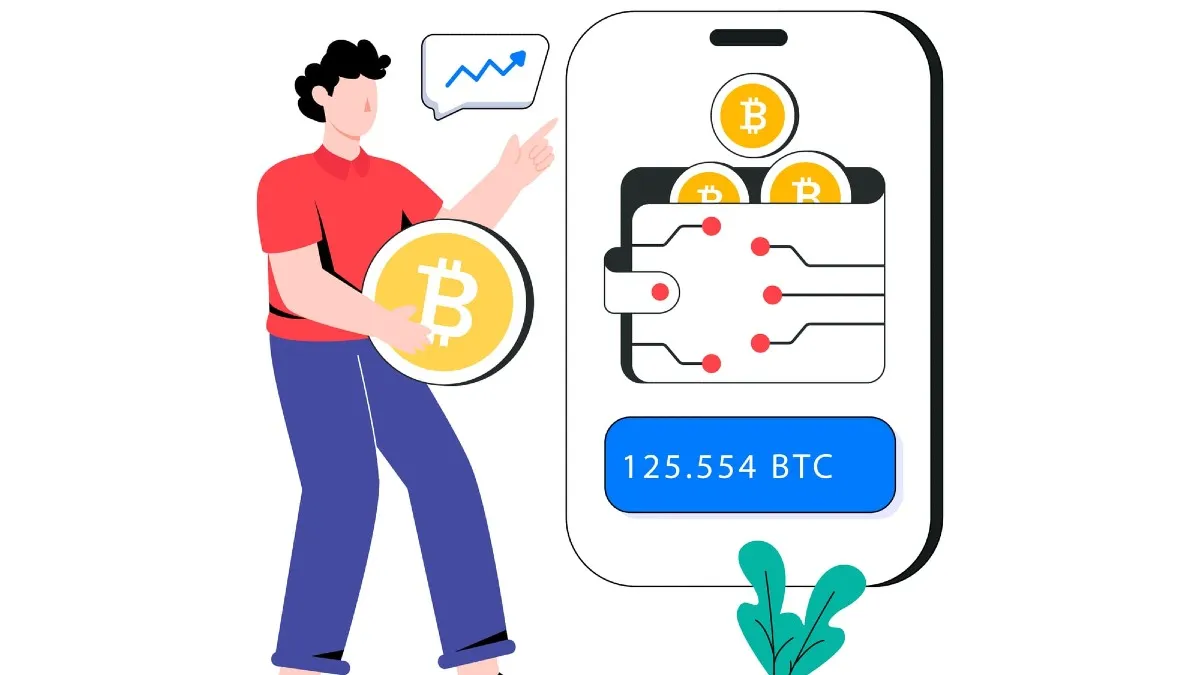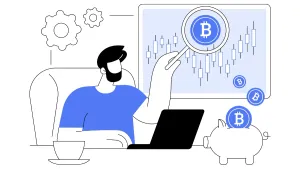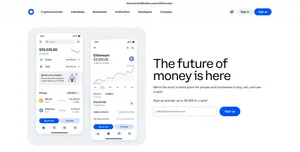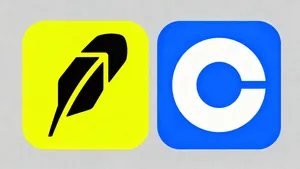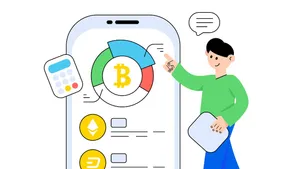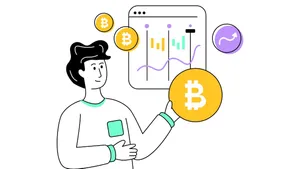Stepping into the world of cryptocurrency can feel like learning a new language. You hear terms like "blockchain," "HODL," and "gas fees" and it's easy to feel intimidated.
Don't be.
The truth is, you only need to know a handful of key terms to understand what's happening and to make your first investment. This is your simple, no-jargon-allowed glossary for the absolute essentials.
We've grouped the terms by category, from the main concepts to the lingo you'll see online.
1. The "Must-Know" Basics
These are the foundational terms you'll hear every day.
- Cryptocurrency A digital or virtual currency secured by cryptography, which makes it nearly impossible to counterfeit. Unlike traditional (or "fiat") money, it's not controlled by any central bank or government.
- Bitcoin (BTC) The original and most well-known cryptocurrency. Think of it as "digital gold"—a store of value that people buy and hold, believing it will be worth more in the future. It's the most popular starting point for new investors.
- How to get it: The easiest way to buy your first Bitcoin is on a trusted exchange like Coinbase.
- Ethereum (ETH) The second most popular cryptocurrency. Ethereum is different from Bitcoin—it's a decentralized "supercomputer" that allows developers to build other applications on its network. These applications include things like NFTs and DeFi (we'll cover those below).
- How to get it: You can buy and sell Ethereum (ETH) on Coinbase, just like Bitcoin.
2. The Core Technology
These terms explain how crypto works.
- Blockchain This is the core technology behind Bitcoin and most other cryptos. A blockchain is a public digital ledger (like a giant, shared receipt book) that is "decentralized."
- Decentralization This just means that no single person, company, or government is in charge. The blockchain network is run by thousands of computers worldwide, making it transparent and resistant to censorship or control.
- Wallet (Crypto Wallet) A digital "wallet" used to store, send, and receive your cryptocurrency. There are two main types:
- Hot Wallet (Custodial): This is a wallet hosted online by an exchange. When you buy crypto on Coinbase, your assets are held for you in their secure custodial wallet. It's the most beginner-friendly option.
- Cold Wallet (Self-Custody): A physical device (like a USB drive) that stores your crypto offline. This is a more advanced, high-security option.
- Private Key (or Seed Phrase) The "master password" to your crypto wallet. It's a long string of words or numbers. You must never share your private key with anyone. If you use a custodial wallet on Coinbase, they manage and protect this for you.
3. The Different Types of Crypto Assets
Not all crypto is "digital gold." Here are the other types.
- Altcoin Short for "alternative coin." This is literally any cryptocurrency that is not Bitcoin. Ethereum is an altcoin, as are Dogecoin (DOGE), Solana (SOL), and thousands of others.
- How to get them: Coinbase offers a wide selection of popular, vetted altcoins for you to explore once you're comfortable with the basics.
- Stablecoin A special type of altcoin that is "pegged" to a stable asset, usually the U.S. dollar. For example, USD Coin (USDC) is designed to always be worth $1. Investors use stablecoins to hold their value without cashing out to traditional money.
- NFT (Non-Fungible Token) A unique digital token on a blockchain that proves you are the one true owner of a digital (or physical) item, like a piece of art, a collectible, or a song. "Non-fongible" is a fancy way of saying "one-of-a-kind."
4. The Lingo (Buying, Selling, and Strategy)
This is the jargon you'll see in headlines and on social media.
- Exchange (Crypto Exchange) A website or app where you can buy, sell, and trade cryptocurrencies. Think of it as a stock brokerage for the crypto world.
- The takeaway: As a beginner, your #1 priority is choosing a safe, easy-to-use, and regulated exchange. Coinbase is the leading and most trusted exchange in the U.S. for this.
- Fiat This is the simple term for any government-issued money, like the U.S. Dollar (USD), Euro (EUR), or Japanese Yen (JPY). It's the money you use to buy crypto.
- Gas Fee A transaction fee you pay to use a blockchain network, most notably Ethereum. Think of it as a "toll" for the network's computing power. (Note: Simple buying and selling on Coinbase does not typically involve high "gas fees" in the same way.)
- HODL This started as a typo for "HOLD" in an old forum post and is now the #1 slang term in crypto. It means "Hold On for Dear Life"—a long-term strategy of buying and holding crypto without selling, regardless of price swings.
- Dollar-Cost Averaging (DCA) The most popular and recommended investment strategy for beginners. It's where you invest a fixed amount of money at regular intervals (e.g., $50 every Friday) instead of trying to "time the market."
- How to do it: This is the best way to remove emotion from investing. You can set this up in 30 seconds on Coinbase using their "Recurring Buy" feature.
- Bull Market / Bear Market Just like in the stock market. A bull market is when prices are rising and optimism is high. A bear market is when prices are falling and sentiment is poor.
Start Your Journey with Confidence
This glossary might seem like a lot, but you've just learned the core language of an entirely new financial technology. You don't need to be an expert in blockchain to start investing, just like you don't need to be a mechanic to drive a car.
Now that you can speak the language, the next step is to see it in action. The best way to learn is by doing—even if you start small.
Ready to take the next step?
Your journey starts with a safe and trusted platform. Sign up for Coinbase to explore these assets, set up your first recurring buy, and put your new knowledge to work.
